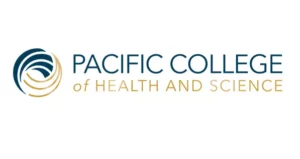The first National Breast Cancer Awareness Month (NBCAM) program began in October 1985. The week-long event was designed to draw attention to breast cancer and the lack of public communication about this often devastating disease. The founding members of the Board of Sponsors, the American Academy of Family Physicians, AstraZeneca Healthcare Foundation and Cancer Care, distributed brochures, addressed news reporters, and testified before a U.S. Congressional committee about the crucial need for widespread access to mammography. Their goal was early detection and treatment.
Since its beginning, NBCAM has been dedicated to raising awareness of breast cancer issues. The organization has evolved and sustained an ongoing national dialogue on breast cancer. NBCAM has helped spearhead many important developments in the fight against breast cancer.
Prevention and Lifestyle Changes for Breast Cancer
Breast cancer is the number-one cancer plague to women worldwide. Fortunately, there are a number of steps you can take to prevent breast cancer. First off, eat more fish, a vital source of cancer-inhibiting omega-3 fatty acids. But avoid fish with high mercury content like tuna, tilefish, swordfish, shark, king mackerel, red snapper, moonfish and orange roughly. Next, eat organics. If you can’t find or afford organic, cut back on ‘regular’ sources of saturated fat and animal protein-like grain-fed beef, chickens raised in cages. Avoid margarine, which is made from hydrogenated oil and rich in trans-fatty acids and omega-6 fatty acids. Use olive oil instead. Another food to avoid is cow’s milk. Needless to say, reduce or eliminate alcohol in any form. And, of course, don’t smoke or use tobacco products.
Importance of Exercise and Sunlight
Don’t forget to exercise! Regular exercise may reduce your risk of one of the most common types of breast cancer (breast carcinoma in situ, which is confined to the milk glands) by as much as 35 percent.
Limit your use of push-up bras. Restrictive bras prevent the lymph system from filtering out toxins. Never wear a bra for more than twelve hours a day and avoid bras that leave red marks or indentations near the bra line.
Get limited, healthful doses of sunlight or take a supplement that provides vitamin D. Vitamin D’s metabolites may reduce breast cancer risk. And ask your doctor about the risks of taking hormones. Taking oral contraceptives and estrogen are both correlated with breast cancer.
If you think a career in holistic medicine is something you would like to pursue, contact us and speak to an admissions representative to get started on your new journey!
Complementary Treatments for Breast Cancer Survivors
More breast cancer survivors are using complementary medical techniques like acupuncture to offset the side effects of treatment. A survey conducted at the University of California, San Francisco, found that 72 percent of survivors had tried at least one complementary method. One 2003 study of 230 cancer patients found that those who received one 45-minute therapeutic massage session per week for a month felt less pain and took about eight fewer doses of pain medication than those in the control group. Another study of 104 women with cancer who used daily electro-acupuncture treatments (the needles were connected to a mild electric current) with their prescribed anti-nausea medication had one-third as many episodes of nausea and vomiting as women who used anti-nausea medication alone. Finally, a 2006 study of 61 breast cancer patients undergoing radiation therapy found that women who went to twice-weekly yoga classes for six weeks had more energy and an easier time with everyday tasks than women in t he control group.
Study stats courtesy of Holistic Health Site
http://www.bellaonline.com/articles/art16981.asp
Featured Posts:

